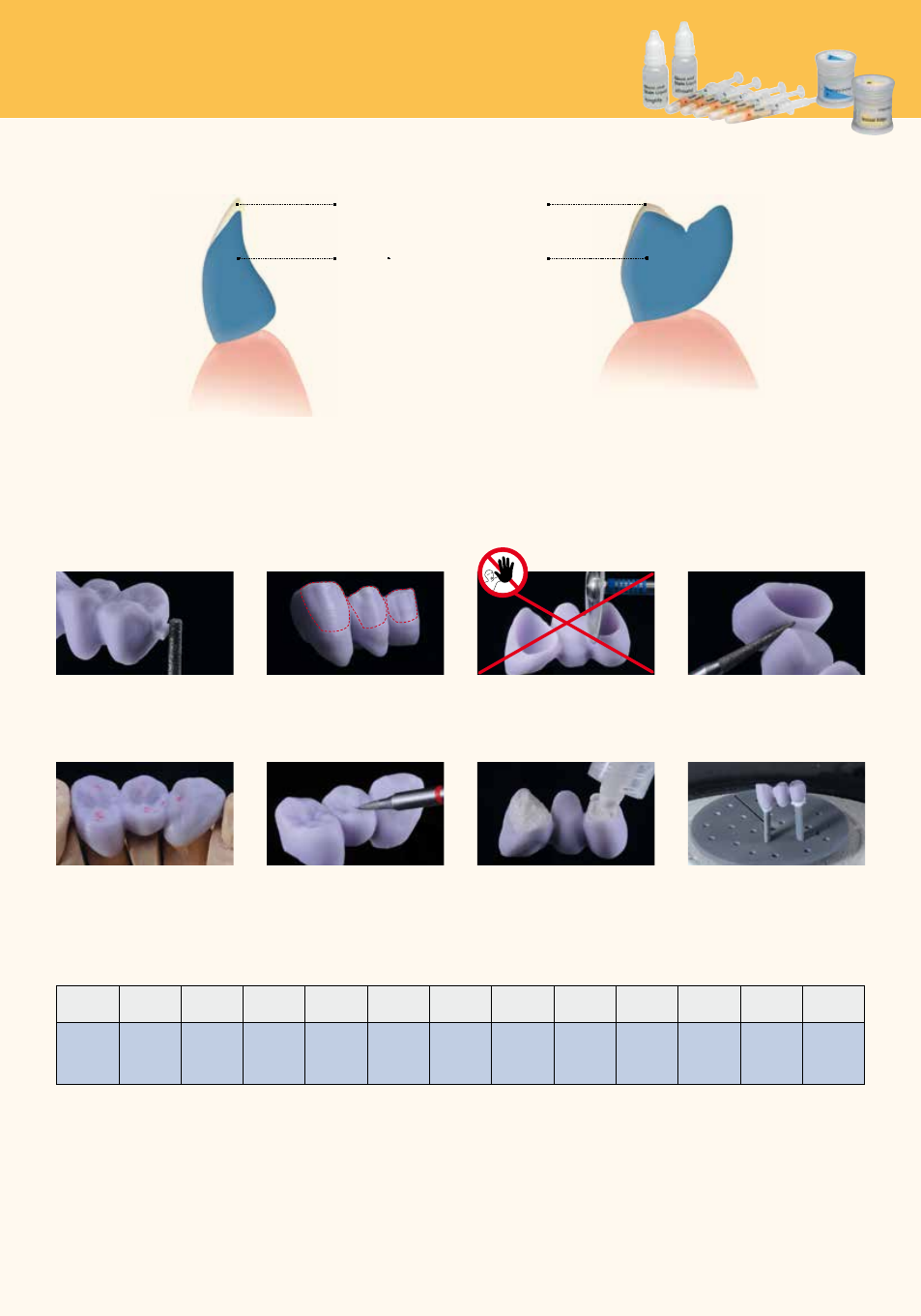Cut-back technique using ips e.max ceram, Design guidelines firing parameters – Ivoclar Vivadent IPS e.max CAD Flow Chart 3-unit bridge User Manual
Page 5

Cut-back technique using
IPS e.max Ceram
Bridge after cut-back
Smooth out the attachment point and take
proximal contacts into account. Do not
inhale ceramic dust during finishing – use
exhaust air discharge and wear face mask.
Surface-grind the outer surface,
particularly the functional areas of the
restoration with a fine diamond to smooth
out the surface structure created by the
CAD/CAM process.
Check occlusion, articulation and proximal
contacts.
Do not use diamond discs for finishing
as this may result in predetermined
breaking points.
Fill the inside of the crowns of the previously
cleaned bridge with IPS Object Fix Putty
or Flow and press the selected IPS e.max
CAD Crystallization Pin deeply into the
Object Fix material. Place the restoration on
the IPS e.max CAD Crystallization Tray
immediately.
Finish the interdental areas with fine-grit
diamonds (grit size 40–50 μm), making sure
to observe the connector dimensions
Place the firing tray in the furnace and
conduct the crystallization firing cycle
with the respective parameters.
Design guidelines
Firing parameters
Crystallization/Glaze
Furnace
Stand-by
temperature
B
[°C/°F]
Closing time
S
[min]
Heating rate
t
1
[°C/°F/min]
Firing
temperature
T
1
[°C/°F]
Holding time
H
1
[min]
Heating rate
t
2
[°C/°F/min]
Firing
temperature
T
2
[°C/°F]
Holding time
H
2
[min]
Vacuum 1
1
1
[°C/°F]
1
2
[°C/°F]
Vacuum 2
2
1
[°C/°F]
2
2
[°C/°F]
Long-term
cooling
L
[°C/°F]
Cooling rate
t
l
[°C/°F/min]
Programat
P300
P500
P700
403/757
6:00
90/162
820/1508
0:10
30/54
840/1544
7:00
550/820
1022/1508
820/840
1508/1540 700/1292
0
Note
Cooling after firing
– Remove IPS e.max CAD objects from the furnace after completion of the firing cycle (wait for the acoustic signal of the furnace).
– Allow the objects to cool to room temperature in a place protected from draft.
– Do not touch the hot objects with metal tongs.
– Do not blast or quench the objects.
When using the cut-back technique, IPS e.max Ceram Impulse and Incisal materials are applied in the incisal and/or occlusal area of the milled, reduced IPS e.max CAD pattern.
Make sure to observe the minimum dimensions during the cut-back process and refrain from designing extreme morphologies with undercuts for mamelons.
Anterior region
IPS e.max Ceram veneer
Extension of IPS e.max CAD
Premolar region
